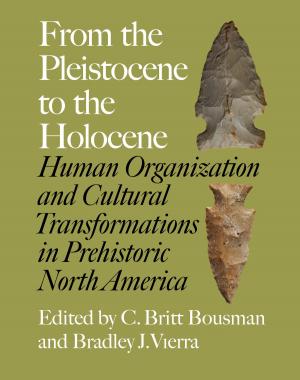| Author: | Sonia Hernández | ISBN: | 9781623491390 |
| Publisher: | Texas A&M University Press | Publication: | February 14, 2014 |
| Imprint: | Texas A&M University Press | Language: | English |
| Author: | Sonia Hernández |
| ISBN: | 9781623491390 |
| Publisher: | Texas A&M University Press |
| Publication: | February 14, 2014 |
| Imprint: | Texas A&M University Press |
| Language: | English |
In Working Women into the Borderlands, author Sonia Hernández sheds light on how women’s labor was shaped by US capital in the northeast region of Mexico and how women’s labor activism simultaneously shaped the nature of foreign investment and relations between Mexicans and Americans. As capital investments fueled the growth of heavy industries in cities and ports such as Monterrey and Tampico, women’s work complemented and strengthened their male counterparts’ labor in industries which were historically male-dominated.
As Hernández reveals, women laborers were expected to maintain their “proper” place in society, and work environments were in fact gendered and class-based. Yet, these prescribed notions of class and gender were frequently challenged as women sought to improve their livelihoods by using everyday forms of negotiation including collective organizing, labor arbitration boards, letter writing, creating unions, assuming positions of confianza (“trustworthiness”), and by migrating to urban centers and/or crossing into Texas.
Drawing extensively on bi-national archival sources, newspapers, and published records, Working Women into the Borderlands demonstrates convincingly how women’s labor contributions shaped the development of one of the most dynamic and contentious borderlands in the globe.
In Working Women into the Borderlands, author Sonia Hernández sheds light on how women’s labor was shaped by US capital in the northeast region of Mexico and how women’s labor activism simultaneously shaped the nature of foreign investment and relations between Mexicans and Americans. As capital investments fueled the growth of heavy industries in cities and ports such as Monterrey and Tampico, women’s work complemented and strengthened their male counterparts’ labor in industries which were historically male-dominated.
As Hernández reveals, women laborers were expected to maintain their “proper” place in society, and work environments were in fact gendered and class-based. Yet, these prescribed notions of class and gender were frequently challenged as women sought to improve their livelihoods by using everyday forms of negotiation including collective organizing, labor arbitration boards, letter writing, creating unions, assuming positions of confianza (“trustworthiness”), and by migrating to urban centers and/or crossing into Texas.
Drawing extensively on bi-national archival sources, newspapers, and published records, Working Women into the Borderlands demonstrates convincingly how women’s labor contributions shaped the development of one of the most dynamic and contentious borderlands in the globe.















